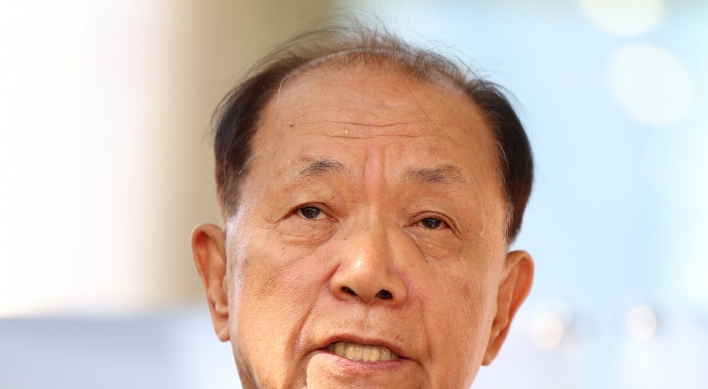Love in times of war
16th-century gisaeng’s story is staged in traditional dance
By Claire LeePublished : Nov. 19, 2012 - 20:12
The famous story of Nongae, the 16th-century “gisaeng,” or female entertainer, is still largely considered a patriotic tale, about a low-caste woman sacrificing her life to help her country in crisis.
The gisaeng lived in Jinju, South Gyeongsang Province, during the Japanese invasion of Korea (1592-1598), and is said to have purposely seduced Japanese general Keyamura Rokusuke. She led him to a cliff, embraced him and jumped ― killing the general as well as herself.
The National Dance Company of Korea’s latest performance, “Dear Nongae,” however, takes a different approach to the historical tale. It’s created based on the premise that both Nongae and the Japanese general developed genuine feelings for each other.
The gisaeng lived in Jinju, South Gyeongsang Province, during the Japanese invasion of Korea (1592-1598), and is said to have purposely seduced Japanese general Keyamura Rokusuke. She led him to a cliff, embraced him and jumped ― killing the general as well as herself.
The National Dance Company of Korea’s latest performance, “Dear Nongae,” however, takes a different approach to the historical tale. It’s created based on the premise that both Nongae and the Japanese general developed genuine feelings for each other.

“Dear Nongae” is only the second original repertoire developed by the state-run troupe. The traditional dance company, which celebrates its 50th anniversary this year, re-staged its 1984 original piece “Madam Domi,” set in Korea’s ancient kingdom of Baekje (B.C. 18 ― A.D. 660), in September.
While “Madam Domi” strictly stuck to Korea’s traditional dance and the shamanic rituals, the troupe’s second project, “Dear Nongae,” is relatively unconventional, drifting away from Korea’s traditional dance. The piece’s choreographer Yoon Seong-joo combined traditional dance with ballet and modern dance movements, focusing on the characters’ inner struggles with conflicting interests and desires.
Yoon, back in 2000, premiered a 20-mintue piece featuring the life of the gisaeng, at SIDance, receiving positive reviews. She developed it into a longer version and showcased it the following year. “Dear Nongae” was created based on Yoon’s 2001 version, starring the troupe’s top and up-and-coming dancers including Kim Mi-ae and Jang Yoon-na.
In order to portray the inner struggles of Nongae and Rokusuke, Yoon made a total of four dancers to play the two characters. While two up-and-coming dancers played the gisaeng and the Japanese general, two of the troupe’s principal dancers performed their alter egos.
One of the highlights of the show, as unveiled during a press showing on Friday, is the scene where the four dancers perform together. While Rokusuke is conflicted between his love for Nongae and his duty as Japan’s military general, Nongae is torn between her feelings for Rokusuke and her anger towards the brutality of war as well as the Japanese.
The two are never honest with each other, as their duties and secret-missions don’t allow them to ― viewers see their anguish through their alter-egos, who look like ghosts donned in white hanbok, their faces as pale as the dead.
Though the piece incorporates ballet and modern dance, “Dear Nongae” delivers the essence of han, Korea’s distinctive cultural ethos. It captures the horrors and sufferings of the war, as well as the collective helplessness caused by the overwhelming violence and loss. The piece dedicates a scene to console the spirits of Nongae and Rokusuke, and release their han.
Following “Madam Domi” and “Dear Nongae,” the National Dance Company of Korea is showcasing another original repertoire in the works, “Chum, Chunhyang,” in June of next year. The piece is based on famous local folktale “Chunhyangjeon,” a love story between a young noble man and Chunhyang, a beautiful daughter of a low caste “gisaeng.”
By Claire Lee (dyc@heraldcorp.com)







![[KH Explains] No more 'Michael' at Kakao Games](http://res.heraldm.com/phpwas/restmb_idxmake.php?idx=644&simg=/content/image/2024/04/28/20240428050183_0.jpg&u=20240428180321)










![[Herald Interview] Mistakes turn into blessings in street performance, director says](http://res.heraldm.com/phpwas/restmb_idxmake.php?idx=652&simg=/content/image/2024/04/28/20240428050150_0.jpg&u=20240428174656)
